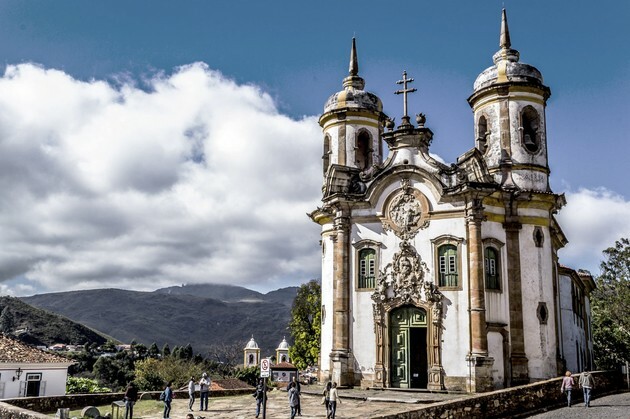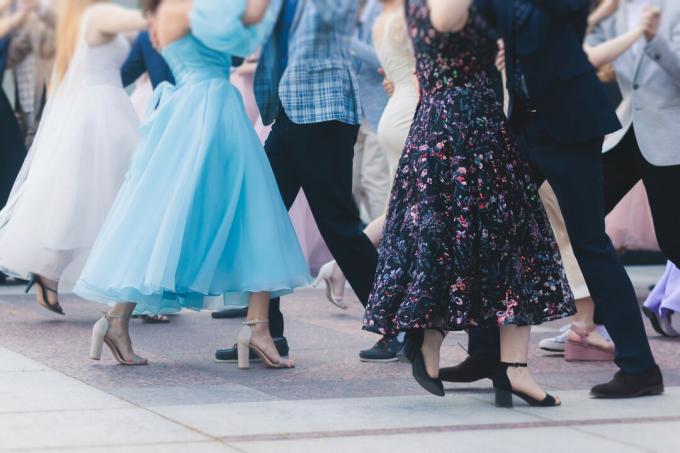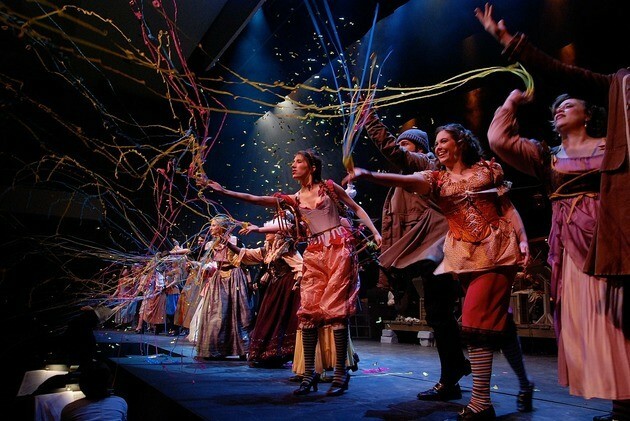Material culture and immaterial culture are two types of heritage that express the culture and characteristics of a particular group or region.
Material culture is made up of concrete elements such as buildings and artistic objects. Immaterial culture, on the other hand, is related to abstract elements, such as habits and rituals.
| material culture | immaterial culture | |
|---|---|---|
| Elements | Material, tangible. | Spiritual, intangible. |
| What are | They can be movable property, such as artistic objects, clothing, works of art, or immovable property, such as buildings and archaeological sites. | Intangible elements such as dance, literature, language, cuisine, parties, sports, among others. |
| Law | Federal Constitution of 1988, articles 215 and 216. | Federal Constitution of 1988, articles 215 and 216. |
| Examples in Brazil | Historic Center of Ouro Preto, Serra da Capivara National Park, Cais do Valongo (RJ). | Roda de capoeira, frevo, bell-ringer. |
Material Culture
Material culture is associated with the concrete elements of a society, representing the culture and history of its population. Assets of a material nature can be movable or immovable.
Real estate includes physical structures, such as historic cities, archaeological and landscape sites, and individual assets. Furniture, on the other hand, are goods that can be transported, such as archaeological collections, museological, documental, bibliographic, archival, videographic, photographic and cinematographic collections.
In Brazil, the forms of protection of material cultural assets are tipping, registration and inventory.
Brazilian material heritage

Some examples of Brazilian material cultural assets classified by the National Historical and Artistic Heritage Institute (IPHAN) are:
- Historic Center of Ouro Preto (Ouro Preto/MG);
- National Historical Museum (Rio de Janeiro/ RJ);
- Paraty Architectural Ensemble (Paraty/RJ);
- Historic Center of Olinda (Olinda/PE);
- Pelourinho (Salvador/BA);
- Serra da Capivara National Park (São Raimundo Nonato/PI);
- Federal University of Paraná (Curitiba/PR).
Immaterial Culture
Intangible cultural assets are the abstract elements that are part of a culture, and concern the practices and domains of the social life of a given group.
These goods can be crafts, knowledge, celebrations, forms of expression and also places, such as markets, fairs and sanctuaries that house collective cultural practices.
Immaterial culture is passed down from generation to generation. As a result, goods are usually recreated and modified by groups and communities according to the environment, through interaction with nature and the historical context of society.
Brazilian intangible heritage

In Brazil, IPHAN has registered 47 intangible assets, divided into forms of expression, knowledge, celebrations and place. Check out a complete list of our country’s intangible heritage below:
forms of expression

- Kusiwa Art - Wajápi Body Painting and Graphic Art (AP)
- Samba de Roda do Recôncavo Baiano (BA)
- Jongo in the Southeast (SP, RJ, ES, MG)
- Frevo (PE)
- Drum of Creole from Maranhão (MA)
- Samba matrices in Rio de Janeiro: alto party, terreiro samba and samba plot (RJ)
- Roda de Capoeira (all states)
- Ringing of the Bells in Minas Gerais (MG)
- Ritxòkò: Artistic and Cosmological Expression of the Karajá People (TO, PA, GO, MT)
- Fandango Caiçara (SP, PR)
- Carimbó (PA)
- Maracatu Nation (PE)
- Maracatu Baque Solto (PE)
- Seahorse (PE)
- Northeast Popular Puppet Theater _ Mamulengo, Babau, João Redondo and Cassimiro Coco (RN, PE, PB, CE, DF)
- Caboclinho from Pernambuco (PE)
- Cordel Literature (RJ, DF, AL, BA, CE, MA, PB, PI, PE, RN, SE)
- Marabass (AP)
knowledge

- Craft of Potters of Goiabeiras (ES)
- How to make Viola-de-Cocho (MT and MS)
- Office of the Baianas of Acarajé (BA)
- Artisanal way of making Queijo de Minas in the regions of Serro, Serra da Canastra and Salitre/ Alto Paranaíba (MG)
- Office of Mestres of Capoeira (all states)
- How to make Irish Lace with reference to this Office in Divina Pastora (SE)
- Office of Bell Ringer (MG)
- Traditional Agricultural System of Rio Negro (AM)
- Knowledge and Practices Associated with Making Karajá Dolls TO (TO, PA, GO, MT)
- Traditional Production and sociocultural practices associated with Cajuína in the state of Piauí (PI)
- Ways to Make Guias of the Lower Amazon (PA)
- Sweet Traditions of the region of Pelotas and Ancient Pelotas – Morro Redondo, Ituruçu, Capão do Leão and Arroio do Padre (RS)
- Traditional Agricultural System of Quilombola Communities in Vale do Ribeira (SP)
celebrations

- Candle of Our Lady of Nazareth (PA)
- Feast of the Holy Spirit of Pirenópolis (GO)
- Yaokwa ritual of the Enawenê Nawê indigenous people (MT)
- Feast of Sant'Ana de Caicó (RN)
- Bumba meu-Boi Cultural Complex in Maranhão (MA)
- Feast of the Divine Holy Spirit of the City of Paraty (RJ)
- Feast of Senhor Bom Jesus do Bonfim (BA)
- Glorious São Sebastião festivities in the Marajó region (PA)
- Feast of the Pau de Santo Antônio de Barbalha (CE)
- Pilgrimage of Ox Carts of the Festa do Divino Pai Eterno de Trindade (GO)
- Procession of Senhor Jesus dos Passos in Florianópolis (SC)
- Boi Bumbá Cultural Complex in the Middle Amazon and Parintins (AM)
places

- Iauaretê Waterfall - Sacred Place of the indigenous peoples of the Uaupés and Papuri Rivers (AM)
- Caruaru Fair (PE)
- Tava, Place of Reference for the Guarani People (RS)
- Campina Grande Fair (PB)
State and municipal intangible heritage
Brazilian states and cities also have the ability to classify intangible heritage that is characteristic of a specific region.
In Rio de Janeiro, for example, Torcida do Flamengo was chosen to integrate the set of intangible assets that are part of the Carioca way of being. Also part of this collection are "Banda de Ipanema" and "Bossa Nova".
The state of São Paulo, in turn, has already highlighted the "Cururu", troubadours who perform at parties, as Intangible Cultural Heritage of São Paulo.
Vessels known as "to-to-tós", in Sergipe, were honored with this mention, increasing the visibility of the regional cultural heritage.
See also the difference between Popular Culture and High Culture.



